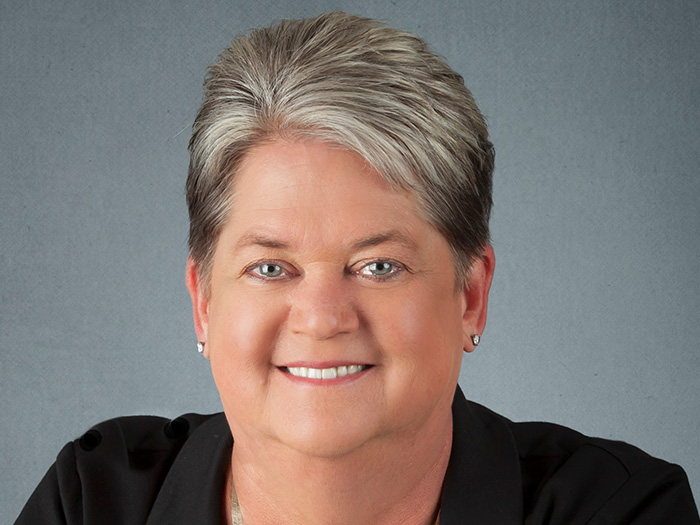Intellectual Property Risks
Defending the Digital Frontier

Digital technology continues to transform the global publishing arena, from changes in copyright law to ways in which media and technology are insured.
Kevin P. Kalinich, Chicago-based global practice leader for cyber/network risk at Aon Risk Solutions, emphasized just how dramatic the transformation in global publishing has been in recent years.
“If you take a look at the top four or five publishers like Pearson, Reuters, Thomson, Reed Elsevier and Wolters Kluwer … in just the last five years they’ve converted from being 75 percent hard copy to being 80 percent electronic.
“It’s amazing, and here’s why it’s so important,” Kalinich added. “In the old world when hard copy ruled, the end user — the consumer — would not be liable because the publisher was liable for publishing it.”
Now, however, there are few limits to how an end user can use digitally published content. And it’s not always clear where the line is between fair use and infringement.
Kalinich and others said that publishers walk the tightrope of trying to protect the original content owner while protecting the end user from unintentional intellectual property infringement.
“End users need the appropriate legal rights to use copyrighted materials or they could potentially commit copyright or trademark infringement,” said Kalinich. “Typically, the IP rights are granted through a licensing agreement or ‘fair use exception’ to copyright violations. Fair use is a limitation and exception to the exclusive right granted by copyright law to the author of a creative work.”
The Role of Intent
In the past year, there have been two landmark copyright decisions in the online publishing realm that have media/technology experts buzzing.
One is Authors Guild Inc., et al. vs. Google Inc., a decision rendered in mid-November. The other is the Associated Press vs. Meltwater U.S. Holdings Inc., a decision reached last March.
In the Google case, book authors and several major book author associations challenged Google’s reproductions of books and “snippets” of millions of books on its website. The book authors claimed this did not constitute “fair use” and violated their copyright protection.
The decision by U.S. Circuit Court Judge Denny Chin in Manhattan — if it survives an announced appeal of the ruling — lets Google continue expanding the online library. Chin ruled that Google’s product helps readers find books they might not otherwise locate.
The institutions that have provided works for scanning of snippets include Harvard University, Oxford University, Stanford University and the New York Public Library.
A key element in Chin’s “fair use” decision was that Google does not receive any monetary gain from posting whole volumes or snippets of some 20 million books in its electronic library.
In the Meltwater case, New York District Court Judge Denise Cote ruled that online aggregator Meltwater infringed upon AP’s copyright protection by using original content that AP had “labored to create.”
Not long after Cote’s ruling, AP and Meltwater entered into an agreement for AP to produce and Meltwater to electronically distribute content in a joint venture.
“It’s encouraging to see collaborations like the one between the Associated Press and Meltwater aggregating service as they try to work together, because clearly this is what the future looks like,” said Joanne Richardson, New York-based practice leader, U.S. media and entertainment, E&O at Hiscox USA.
“Companies that find ways to bring content and distribution together are really going to be the winners at the end of the day,” Richardson added. “I think it’s the way things are going to have to go. They need each other. It’s a win/win for everybody.”
Eric Seyfried, New York-based senior vice president at Marsh & McLennan Cos.’ FINPRO group, makes a distinction between online aggregators that are in business for monetary gain, like Meltwater, and online aggregators like Google Books, which exist to serve research and other scholarly purposes.
“In Judge Chin’s decision, he talks about Google providing significant public benefit,” said Seyfried. “Are they making available information that has been buried in the bowels of libraries, for example? In the Google case you have to look at the purpose and character of the use. Are they bringing potentially long-lost volumes to light for scholarship and research?”
Seyfried believed that Chin was “growing the pie” of books available.
Aon Risk Solutions’ Kalinich noted that Chin said he believed the authors involved would get more sales because Google was cataloguing their work, and that Google wasn’t making any money off the arrangement.
In the Meltwater case, Marsh’s Seyfried said, Meltwater used its proprietary technology to “scrape” the Internet for news stories and then processed the information into some sort of news digest for their subscribers.
“Is Google trying to further some level of scholarship and research, whereas Meltwater is looking to monetize content for its own benefit through selling subscriptions?” asked Seyfried. “It’s not some sort of academic or intellectual exercise, while Google is about building the brand rather than a subscription base.”
Louis Scimecca, Kansas City, Mo.-based senior vice president for AXIS PRO, which provides media and entertainment coverage, among other solutions, noted: “With the Internet and electronic communications flourishing and expanding, in a lot of cases the law hasn’t caught up with new technology. The technology comes and then the law follows.”
Scimecca said that the issue isn’t restricted to content aggregators. Any individual can find themselves in a legal tangle for using another party’s copyrighted material or trademarked digital matter without permission. “Generally right now, if a person or an entity is taking somebody’s else’s copyright material without permission or consent, that is a problem,” he said.
As in the Google case, Scimecca said, “fair use” might be a defense if material is used for educational, scholarly or teaching purposes.
Protecting the Business
In the realm of insuring risks at media/technology companies, Chad Milton, a partner at Kansas City, Mo.-based Media Risk Consultants LLC, said that as technology at media companies with innovative strategies change, these businesses threaten somebody else’s old business model.
“And the result more often than not leads to a copyright infringement claim,” said Milton. “The history of this kind of litigation is that it’s really about business practices rather than about individual bits of content. We’re not really talking about infringements in a writer’s product or work, we’re really talking about infringements in the way media companies do business.”
It wasn’t often that anybody cared about copyright infringement when content was free, Milton added. “But now that so many online publishers are trying to find ways to monetize their content, it now conflicts with the business models of the online aggregators who want to use other people’s content without paying for it.”
This environment creates interesting risks for insurers because formerly the insurers were asked to insure individual bits of media content: individual songs, individual films, individual stories and individual broadcasts, Milton said.
“They’re now being put in the position of insuring business models, and it’s harder for insurers to be able to insure the innovators,” Milton said. “And I think they need to find a way to convince underwriters that this is a manageable risk. I know there’s some resistance on the carriers’ part about this.”
But Hiscox USA is not one of those underwriters. As long as a decade ago Hiscox was creating product to address the merger of media and technology.
“We were able to put a form together that addressed both, so there was no gap in coverage because media companies now had technology exposure and technology companies had media exposures,” said Hiscox’s Richardson. “Today, there’s a lot more combined forms of media, technology and data privacy.”
Richardson said Hiscox tends to look at things on an individual risk basis, which means they want to understand how these new technologies work and function and be able to sort out exactly what some of the hiccups for them might be along the way.
“We will need a lot more case law to develop in some of these areas before we’re able to ultimately and completely understand all the exposures,” she added.
Observed Marsh’s Seyfried: “The key to insuring a media company is to try to come up with a comprehensive professional liability program. The foundation of that program is based on media liability insurance and making sure that a robust program covers a variety of media perils.”
The next step is finding a market that has the appetite to take on the risk. The other piece of the coverage is some sort of technology offering.
“I can say I do not have one significant media client in the whole risk management space that does not buy some combination of network privacy coverage and/or technology products and services coverage,” Seyfried said.











